Empower Your Call Center with 12 Free Quality Assurance Scorecard Templates!
Is your call center struggling to measure agent performance effectively? Do you lack the resources to create customized scorecards for different departments? We’ve got you covered!
This comprehensive guide provides you with complimentary call center quality assurance scorecard templates, designed to streamline your QA process and elevate customer service.
Inside, you’ll find scorecards tailored for various call center types, see all the options below.
Each template outlines key performance indicators (KPIs) specific to the department, along with clear descriptions and point allocation. This allows you to easily assess agent performance across critical areas like communication, problem-solving, and customer focus.
Start using your free scorecard templates today and start:
- Identifying agent strengths and weaknesses
- Implementing targeted coaching and development programs
- Ensuring consistent, high-quality customer service
- Improving overall call center performance
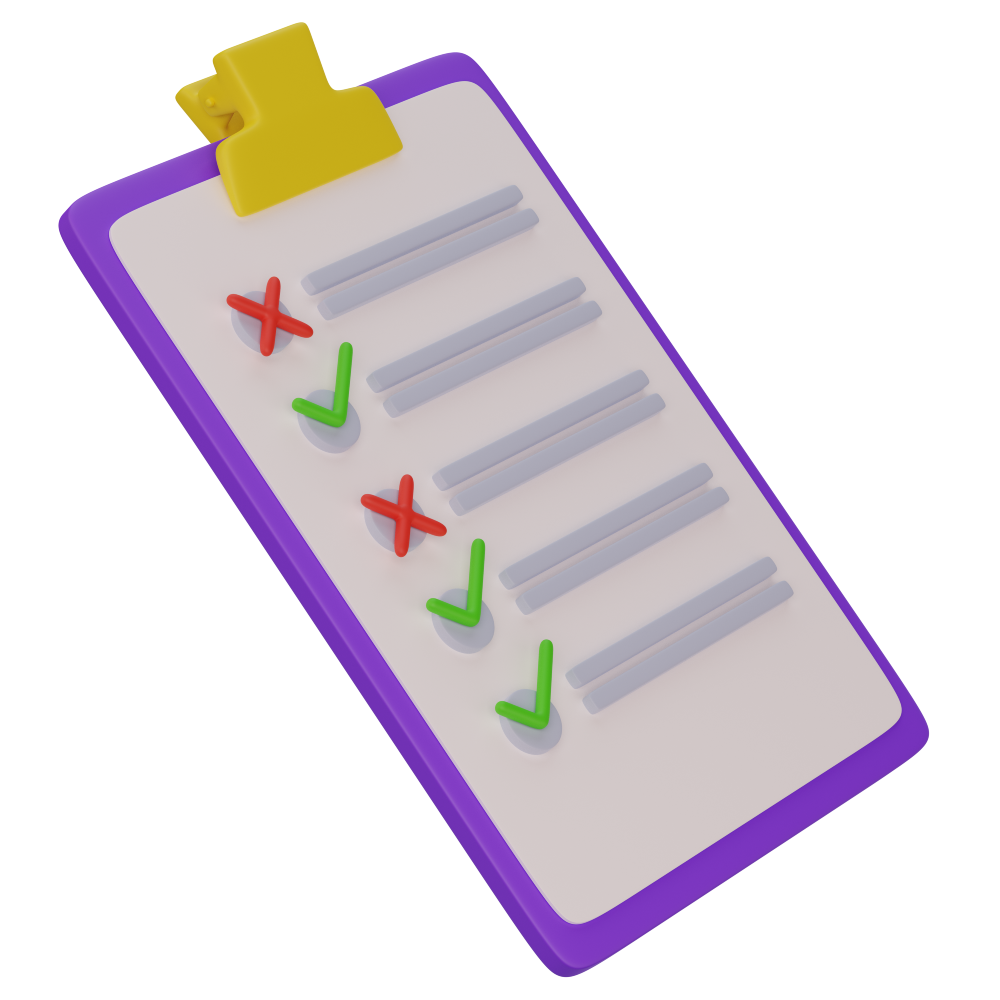
Table of contents
Just click on the chapter you want below and jump to it.
Inbound Call Centers
Inbound call centers are the frontline for customer interaction. While agents strive to deliver exceptional service, mistakes can happen. Here’s a breakdown of some common pitfalls and how to avoid them:
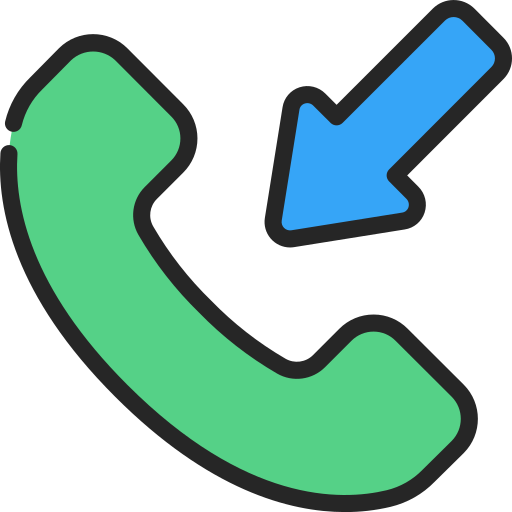
Main problems in Inbound Call Centers
1. Lack of Empathy: Inbound calls often involve customers with problems or frustrations. Agents who appear indifferent or dismissive can exacerbate the situation. Emphasize empathy training to ensure agents actively listen and show understanding.
2. Missing the Mark on Communication: Clear communication is key. Jargon-filled explanations or hurried interactions leave customers confused. Train agents on using clear, concise language and tailoring communication styles to each customer.
3. Failing to Resolve Issues: Unresolved issues lead to frustrated customers. Equip agents with problem-solving skills and empower them to find solutions within their capacity. When escalation is necessary, ensure a smooth handover to the appropriate team member.
4. Inconsistent Service Delivery: Customers expect a consistent experience, regardless of the agent they interact with. Standardize procedures and provide ongoing coaching to ensure all agents deliver quality service aligned with company guidelines.
5. Knowledge Gaps: Agents lacking in-depth knowledge about products, services, or policies struggle to address customer inquiries effectively. Invest in comprehensive training programs to equip agents with the knowledge they need to excel.
6. Not Following Up: Following up on promises or commitments demonstrates professionalism and builds trust. Implement a system for timely follow-ups to ensure customer concerns are addressed and resolutions are implemented.
7. Multitasking Mayhem: Inbound calls can be fast-paced. Juggling multiple tasks at once can lead to errors and missed details. Train agents on effective time management and prioritize tasks to ensure each customer receives focused attention.
By minimizing these mistakes, call centers can empower agents to deliver exceptional service, fostering positive customer interactions and building long-term customer loyalty.
Inbound Call Center Quality Assurance Scorecard Template
Focusing on these main problems mentioned above, we’ve built an inbound call center quality assurance scorecard template, that you can get inspired.
| Criteria | Description | Points |
| Opening and Professionalism | ||
| Greeting | Uses a friendly and professional greeting (e.g., “Thank you for calling [Company Name], this is [Agent Name]. How may I assist you today?”). Discloses the call may be recorded for quality assurance purposes (company policy permitting). | 3 |
| Active Listening | Demonstrates active listening skills (e.g., acknowledges caller, uses verbal cues like “uh-huh” or “okay”). Avoids interrupting the caller. | 3 |
| Empathy | Uses empathetic language to acknowledge the caller’s concerns (e.g., “I understand your frustration…” or “It sounds like you’re having trouble with…”). | 3 |
| Professionalism | Maintains a professional and courteous tone throughout the call. Uses clear and concise language. Avoids personal opinions or unprofessional language. | 3 |
| Customer Focus and understanding | ||
| Needs Identification | Effectively gathers information to understand the caller’s needs and concerns. Asks clarifying questions to ensure a complete understanding of the issue. | 5 |
| Customer Focus | Prioritizes the customer’s needs throughout the call. Uses solutions and language tailored to the customer’s situation. | 5 |
| Building Rapport | Establishes rapport and builds trust with the customer. Maintains a positive and helpful attitude. | 5 |
| Communication | Communicates clearly and concisely with the customer. Avoids technical jargon and uses language the customer understands. | 5 |
| Product Knowledge & Problem-Solving | ||
| Product Knowledge | Demonstrates a strong understanding of the company’s products and services. Answers customer questions accurately and confidently. | 10 |
| Solution-Oriented | Focuses on providing solutions and resolutions to customer problems. Offers multiple options when possible. | 5 |
| Problem-Solving Skills | Uses critical thinking and problem-solving skills to address customer concerns. Thinks creatively to find solutions for complex issues. | 5 |
| Escalation | Knows when to escalate complex issues or customer complaints to a supervisor. Follows proper procedures for escalation. | 5 |
| Call Resolution & Follow-up | ||
| First Call Resolution FCR | Attempts to resolve the customer’s issue during the first call whenever possible. Documents the resolution clearly for future reference. | 5 |
| Action Items & Follow-Up | Clearly communicates any action items or follow-up steps to the customer. Documents next steps and deadlines for internal tracking. | 5 |
| Customer Verification | Verifies customer satisfaction with the resolution before ending the call. Offers options for further assistance if needed. | 5 |
| Call Closure | Ends the call with a courteous and professional closing. Thanks the customer for their call. | 5 |
| Additional Considerations | ||
| Company Policies & Procedures | Adheres to all company policies and procedures during the call. Maintains data security and confidentiality. | 5 |
| Upselling & Cross-Selling | Presents upselling and cross-selling opportunities in a professional and appropriate manner if applicable. | 5 |
| Compliance | Maintains compliance with industry regulations and legal requirements. | 5 |
| Coaching & Development | Open to coaching and feedback for continuous development. Demonstrates a willingness to learn and improve. | 5 |
Use this template directly into CYF Quality today and start evaluating effortlessly for free—no Excel headaches. With CYF Free, you’ll enjoy:
- Access to a plethora of scorecard templates and easily edit it your way and easily edit it your way
- Automated Quality Index reports.
- Identification of common faults.
- Productivity insights.
- Send agent feedback notifications via email for seamless communication.
and so much more!
Outbound Call Centers
Outbound call centers are a crucial link between businesses and potential customers. However, even the most well-designed campaign can be derailed by agent mistakes.
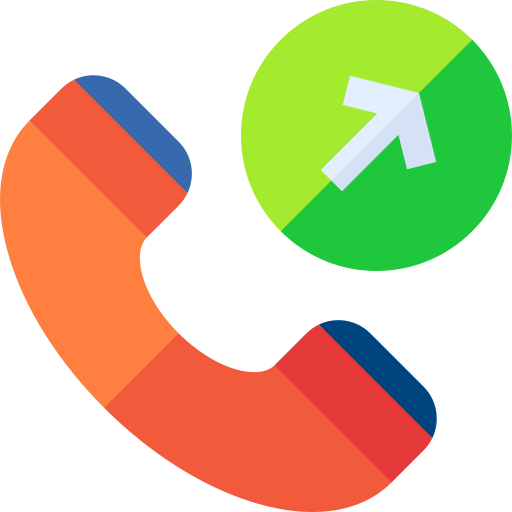
Main problems in Outbound Call Centers
- Winging It: Customers can spot a lack of product knowledge a mile away. Solid preparation and in-depth understanding of your offerings are essential.
- Objection Avalanche: Be prepared for objections! Failing to anticipate and address customer concerns can stall conversations.
- Robots with Heartbreak: Customers are people, not targets. Lack of empathy creates distance and discourages connection.
- Freestyling the Script: Skipping call scripts can lead to disjointed conversations and missed key points.
- Casual Fridays… Every Day: Maintain a professional tone throughout the call. Slang and informality erode trust.
- The Art of Not Listening: Active listening is key to understanding customer needs. Don’t just wait for your turn to talk.
- Talking Over Trouble: Interrupting customers shows disrespect and hinders clear communication. Let them speak!
- The Hard Sell: High-pressure tactics backfire. Focus on building rapport and presenting solutions, not forcing sales.
- One-Size-Fits-None: Tailor your approach to each customer’s unique situation. Generic pitches fall flat.
- The Hold Abyss: Long hold times are a customer service killer. Minimize wait times whenever possible.
- Fast Fingers, Fuzzy Facts: Accuracy is paramount. Double-check information before sharing it with customers.
- Grammar Gremlins: Typos and grammatical errors scream unprofessionalism. Proofread chat messages carefully.
- The Silent Exit: Closing skills matter. Secure commitments or next steps before ending the conversation.
Outbound Call Center Quality Assurance Scorecard Template
Focusing on these main problems mentioned above, we’ve built an outbound call center quality assurance scorecard template, that you can get inspired.
| Criteria | Description | Points |
| Preparation & Knowledge | ||
| Product Knowledge | Demonstrates a thorough understanding of products/services. | 5 |
| Script Familiarity | Uses the call script effectively, personalizes when appropriate. | 5 |
| Communication Skills | ||
| Professional Tone | Maintains a courteous and professional demeanor throughout the call. | 5 |
| Active Listening | Demonstrates active listening skills by summarizing key points and responding thoughtfully. | 5 |
| Avoiding Interruptions | Allows the customer to speak uninterrupted and acknowledges their concerns. | 5 |
| Customer Focus | ||
| Empathy | Shows empathy for the customer’s situation and builds rapport. | 5 |
| Objection Handling | Effectively addresses customer objections and concerns. | 5 |
| Tailored Approach | Adjusts communication style and pitch based on the customer’s needs. | 5 |
| Call Efficiency | ||
| Script Adherence | Follows the call script for key information and legal disclaimers. | 3 |
| Minimizing Hold Times | Keeps hold times to a minimum and apologizes for any delays. | 3 |
| Accuracy & Clarity | ||
| Information Accuracy | Provides accurate and up-to-date information about products, services, and policies. | 5 |
| Grammar & Mechanics | Uses clear, concise language with proper grammar and spelling in chats. | 3 |
| Closing & Follow-up | ||
| Closing Skills | Effectively transitions to a call to action or next steps. | 3 |
| Wrap-up & Notes | Accurately documents call details and next steps in the CRM system. | 2 |
Use this template directly into CYF Quality today and start evaluating effortlessly for free—no Excel headaches. With CYF Free, you’ll enjoy:
- Access to a plethora of scorecard templates and easily edit it your way and easily edit it your way
- Automated Quality Index reports.
- Identification of common faults.
- Productivity insights.
- Send agent feedback notifications via email for seamless communication.
and so much more!
Virtual Call Centers
Virtual call centers offer a flexible and cost-effective solution, with agents working remotely rather than in a centralized office. However, the remote nature of these centers presents unique challenges that can impact customer service quality. Here are some common mistakes virtual agents make and the resulting issues.
Main problems in Virtual Call Centers
- Limited Nonverbal Cues: Unlike traditional in-office settings, virtual interactions lack visual cues like body language. Agents might struggle to gauge customer emotions or miss subtle cues that indicate frustration or confusion. This can lead to misinterpretations and missed opportunities to address underlying concerns proactively.
- Distractions and Background Noise: Working from home environments can introduce distractions and background noise. Agents might struggle to focus fully on the customer’s issue or miss important details. This can decrease efficiency, lead to errors in information gathering, and ultimately result in a less satisfying customer experience.
- Isolation and Lack of Collaboration: Remote work can lead to feelings of isolation and hinder collaboration with colleagues. Agents might find it challenging to seek quick support or brainstorm solutions with teammates readily available in traditional settings. This can result in longer resolution times, missed opportunities for knowledge sharing, and decreased overall team morale.
- Technical Issues and Downtime: Virtual call centers rely heavily on technology. Technical glitches or internet connectivity issues can disrupt communication and frustrate both agents and customers. This can lead to dropped calls, delays in service, and a negative perception of the call center’s professionalism.
Virtual Call Center Quality Assurance Scorecard Template
To address these challenges and ensure virtual agents deliver exceptional service, call centers must prioritize ongoing training and development initiatives. This includes:
Active listening workshops: Equip agents with techniques to effectively listen verbally and identify nonverbal cues through tone and language patterns.
Communication skills development: Train agents on clear, concise communication in a remote setting, emphasizing empathy and professionalism.
Collaboration tools and knowledge-sharing platforms: Foster a collaborative environment by providing tools and platforms for agents to connect with colleagues, share best practices, and seek support efficiently.
Robust technology infrastructure: Invest in reliable technology solutions with backups and redundancy plans to minimize technical disruptions.
By acknowledging the unique challenges of virtual call centers and implementing targeted training and support, businesses can empower their remote agents to deliver high-quality customer service, building trust and loyalty with every interaction.
Here is the scorecard template that covers what we mentioned:
| Criteria | Description | Points |
| Active Listening | ||
| Initiates conversation professionally | Greets customer warmly, introduces themselves and company | 2 |
| Asks clarifying questions | Demonstrates understanding by seeking additional information | 2 |
| Avoids interruptions | Allows customer to fully express their concerns | 2 |
| Communication Skills | ||
| Clearly explains information or instructions | Uses concise and easy-to-understand language | 2 |
| Tailors communication style to customer | Adjusts tone and approach based on customer needs | 2 |
| Uses positive and professional language | Avoids jargon and maintains respectful tone | 2 |
| Product Knowledge | ||
| Accurately identifies customer’s issue | Demonstrates understanding of relevant products or services | 2 |
| Provides accurate solutions or information | Offers correct guidance or resolutions to customer inquiries | 3 |
| Able to answer basic product questions | Possesses foundational knowledge about products/services | 2 |
| Performance Consistency | ||
| Follows established call center procedures | Adheres to company protocols for handling interactions | 2 |
| Maintains consistent level of professionalism | Delivers service at a reliable standard throughout the call | 2 |
| Applies appropriate problem-solving skills | Consistently demonstrates effective techniques for resolving issues | 2 |
| Post-Interaction Tasks | ||
| Accurately updates customer records | Ensures all relevant customer information is correctly documented | 2 |
| Completes all promised follow-up actions | Meets commitments made to the customer (e.g., callbacks, emails) | 2 |
| Documents key details of the interaction | Provides clear notes for future reference or escalation if needed | 2 |
Use this template directly into CYF Quality today and start evaluating effortlessly for free—no Excel headaches. With CYF Free, you’ll enjoy:
- Access to a plethora of scorecard templates and easily edit it your way and easily edit it your way
- Automated Quality Index reports.
- Identification of common faults.
- Productivity insights.
- Send agent feedback notifications via email for seamless communication.
and so much more!
Blended Call Centers
Blended call centers handle both inbound and outbound calls. Agents switch between handling incoming calls and making outbound calls based on demand and priorities.
In blended call centers, where agents handle both phone calls and chat interactions, there are several common mistakes that agents may encounter, impacting their performance and the overall customer experience.
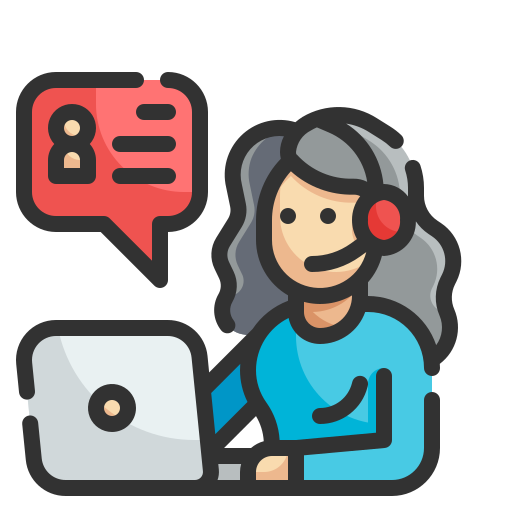
Main problems in Blended Call Centers
- Difficulty Balancing Workload: Agents may struggle to effectively manage the workload associated with handling both phone calls and chat interactions simultaneously. The varying demands of each channel can make it challenging to allocate time and attention appropriately, leading to delays in response times or incomplete interactions.
- Lack of Context Switching: Switching between phone calls and chat conversations requires quick adaptation and effective context switching. Agents may find it challenging to transition seamlessly between the two channels, resulting in confusion or errors in communication with customers.
- Inconsistent Performance Metrics: Performance metrics and targets may not accurately reflect the demands and complexities of handling blended interactions. Agents may be evaluated based on metrics that prioritize one channel over the other or fail to capture the full scope of their responsibilities, leading to inconsistent evaluations and ineffective coaching efforts.
- Difficulty Managing Multiple Channels: Balancing the demands of phone calls and chat interactions simultaneously can be overwhelming for agents. Juggling multiple conversations across different channels may result in delays in response times, increased stress levels, and reduced effectiveness in addressing customer inquiries or issues.
- Misalignment of Performance Metrics: Performance metrics and targets may not be aligned with the goals and objectives of handling blended interactions. Agents may be incentivized to prioritize one channel over the other or may not receive appropriate recognition for their efforts in managing both channels effectively, leading to dissatisfaction and demotivation among the team.
Blended Call Center Quality Assurance Scorecard Template
To mitigate these challenges, blended call centers must provide comprehensive training and support for agents, emphasizing effective time management, multitasking skills, and the ability to adapt to different communication channels.
Here is the scorecard template that covers what we mentioned:
| Criteria | Description | Points |
| Call Handling | ||
| Opening & Greeting | Agent effectively greets the customer, identifies themselves & the company (phone) | 2 |
| Active Listening & Empathy | Agent demonstrates active listening skills & empathy throughout the call | 3 |
| Problem Identification & Diagnosis | Agent effectively identifies and diagnoses the customer’s problem | 4 |
| Solution Presentation & Clarity | Agent clearly explains the solution and ensures customer understanding (phone) | 3 |
| Closing & Next Steps | Agent professionally concludes the call, thanks the customer, and offers next steps (phone) | 2 |
| Chat Handling | ||
| Opening & Introduction | Agent greets the customer promptly and introduces themselves & the company (chat) | 2 |
| Responsiveness & Availability | Agent responds to customer inquiries in a timely manner (chat) | 3 |
| Clear & Concise Communication | Agent uses clear and concise language throughout the chat interaction | 3 |
| Issue Resolution | Agent effectively addresses the customer’s inquiry or issue (chat) | 4 |
| Closing & Next Steps | Agent professionally concludes the chat, thanks the customer, and offers next steps (chat) | 2 |
| Work Management & Multitasking | ||
| Prioritization & Time Management | Agent effectively prioritizes and manages workload between calls and chats | 4 |
| Context Switching & Adaptability | Agent seamlessly transitions between calls and chat conversations | 3 |
| Maintaining Focus & Attention | Agent maintains focus and attention despite handling multiple interactions | 3 |
| Overall Customer Experience | ||
| Professionalism & Courtesy | Agent maintains a professional and courteous demeanor throughout the interaction | 3 |
| Customer Satisfaction | Agent demonstrates efforts to ensure customer satisfaction | 3 |
| Additional Notes** | ||
| Specific strengths or areas for improvement | Use this space to provide specific feedback on agent performance |
Use this template directly into CYF Quality today and start evaluating effortlessly for free—no Excel headaches. With CYF Free, you’ll enjoy:
- Access to a plethora of scorecard templates and easily edit it your way and easily edit it your way
- Automated Quality Index reports.
- Identification of common faults.
- Productivity insights.
- Send agent feedback notifications via email for seamless communication.
and so much more!
Sales Call Centers
These centers focus primarily on outbound sales calls, aiming to generate leads, qualify prospects, and close sales over the phone.
In sales call centers, where agents play a crucial role in driving revenue and fostering customer relationships, several common mistakes can hinder their effectiveness. Here are some key aspects focusing on agent mistakes.

Main problems in Sales Call Centers
- Ineffective Communication Skills: Agents may struggle to effectively convey their message or build rapport with customers due to poor communication skills. This can manifest in speaking too quickly, using technical jargon that the customer doesn’t understand, or failing to convey enthusiasm and persuasion.
- Failure to Identify Customer Needs: Agents may overlook the importance of understanding and addressing the specific needs and preferences of each customer. Failing to identify these needs can result in a mismatch between the product or service being offered and what the customer actually requires, leading to missed sales opportunities.
- Pushy or Aggressive Sales Tactics: Adopting pushy or aggressive sales tactics can backfire, alienating customers and undermining the rapport-building process. Customers may feel pressured or uncomfortable, leading to resistance and objections to making a purchase.
- Overlooking Cross-Selling or Up-Selling Opportunities: Agents may focus solely on the primary sales objective without considering additional opportunities for cross-selling or up-selling related products or services. This oversight can result in missed revenue potential and fail to maximize the value of each customer interaction.
- Neglecting Follow-Up: After the initial sales call, agents may fail to follow up effectively to nurture leads or address any remaining concerns. Neglecting follow-up can result in missed opportunities to close sales, build long-term customer relationships, or address potential objections that may arise after the initial interaction.
Sales Call Center Quality Assurance Scorecard Template
Addressing these mistakes requires comprehensive training and ongoing coaching for agents to enhance their communication skills, sales techniques, and customer-centric approach. Emphasizing the importance of actively listening to customer needs, avoiding aggressive sales tactics, and prioritizing follow-up can help agents improve their performance and drive success in sales call centers.
| Criteria | Description | Points |
| Communication Skills | ||
| Clarity & Conciseness | Agent uses clear, concise, and jargon-free language to explain products services | 3 |
| Enthusiasm & Persuasion | Agent demonstrates enthusiasm and communicates the value proposition effectively | 3 |
| Active Listening & Empathy | Agent listens actively to customer needs and demonstrates empathy | 4 |
| Customer Needs Assessment | ||
| Needs Identification & Qualification | Agent effectively identifies and qualifies customer needs to determine the most suitable product service | 4 |
| Feature & Benefit Matching | Agent aligns product features and benefits with the identified customer needs | 3 |
| Sales Techniques | ||
| Professional & Ethical Approach | Agent avoids pushy or aggressive sales tactics and maintains a professional demeanor | 3 |
| Objection Handling | Agent effectively addresses customer objections and concerns | 4 |
| Closing Techniques | Agent utilizes appropriate closing techniques to secure the sale ethically | 3 |
| Sales Follow-Up | ||
| Commitment to Follow-Up | Agent demonstrates commitment to follow up with the customer after the call | 2 |
| Clear Next Steps & Action Plan | Agent outlines clear next steps and action plan for the customer (e.g., scheduling a demo) | 2 |
| Overall Customer Experience | ||
| Professionalism & Courtesy | Agent maintains a professional and courteous demeanor throughout the interaction | 3 |
| Building Rapport & Trust | Agent builds rapport and fosters a sense of trust with the customer | 3 |
| Additional Notes** | ||
| Specific strengths or areas for improvement | Use this space to provide specific feedback on agent performance |
Use this template directly into CYF Quality today and start evaluating effortlessly for free—no Excel headaches. With CYF Free, you’ll enjoy:
- Access to a plethora of scorecard templates and easily edit it your way and easily edit it your way
- Automated Quality Index reports.
- Identification of common faults.
- Productivity insights.
- Send agent feedback notifications via email for seamless communication.
and so much more!
Customer Service Call Centers
Customer service call centers specialize in providing support and assistance to customers with product inquiries, technical issues, complaints, or other service-related matters.
In customer service call centers, where agents play a pivotal role in shaping the customer experience, several common mistakes can hinder their effectiveness. Here are some key aspects focusing on agent mistakes.
Main problems in Customer Service Call Centers
- Ignoring Customer Feedback: One of the critical mistakes agents may make is ignoring or dismissing customer feedback. Whether it’s complaints, suggestions, or inquiries, failing to acknowledge and address customer feedback can lead to unresolved issues and dissatisfaction among customers.
- Difficulty Handling Emotional or Difficult Customers: Agents may struggle to effectively manage interactions with emotionally charged or difficult customers. Dealing with frustrated, angry, or upset customers requires patience, empathy, and de-escalation skills. Failure to handle such situations appropriately can escalate tensions and exacerbate the customer’s dissatisfaction.
- Failure to Resolve Issues Promptly: Customers expect timely resolution to their issues or inquiries when they reach out to customer service. Agents who are unable to resolve issues promptly may lead to prolonged wait times, frustration, and dissatisfaction among customers. This delay in resolution can impact the overall customer experience and erode trust in the company’s ability to provide reliable support.
- Inconsistency in Service Delivery: Consistency is key in customer service, yet agents may provide varying levels of service quality. Inconsistencies in how agents handle inquiries, resolve issues, or communicate with customers can lead to confusion, frustration, and dissatisfaction. Customers should receive a consistent and reliable level of service, regardless of which agent they interact with.
Customer Service Call Center Quality Assurance Scorecard Template
Addressing these common mistakes requires comprehensive training, ongoing coaching, and support for agents. Emphasis should be placed on active listening, empathy, de-escalation techniques, and efficient issue resolution processes.
Here is the scorecard template that covers what we mentioned:
| Criteria | Description | Points |
| Customer Focus | ||
| Active Listening & Empathy | Agent demonstrates active listening skills and empathy throughout the interaction | 4 |
| Acknowledgement & Validation | Agent acknowledges and validates customer concerns or feedback | 2 |
| Meeting Customer Needs | Agent focuses on understanding and meeting the customer’s needs to their satisfaction | 4 |
| Issue Resolution | ||
| Efficient Problem-Solving | Agent demonstrates efficient problem-solving skills and works towards a swift resolution | 4 |
| First Call Resolution (if applicable) | Agent strives to resolve the customer’s issue during the initial call whenever possible | 2 |
| Clear Communication & Follow-Up | Agent communicates clearly throughout the interaction and outlines any necessary follow-up steps | 3 |
| Emotional Intelligence | ||
| De-escalation Techniques | Agent effectively manages interactions with emotional or difficult customers using de-escalation techniques | 3 |
| Patience & Professionalism | Agent maintains patience and professionalism throughout the interaction, regardless of the customer’s demeanor | 3 |
| Service Consistency | ||
| Adherence to Company Policies | Agent adheres to company policies and procedures when resolving customer issues | 2 |
| Consistent Service Delivery | Agent provides consistent and high-quality service, regardless of the specific issue or inquiry | 3 |
| Overall Customer Experience | ||
| Customer Satisfaction | Agent strives to ensure customer satisfaction by addressing their concerns effectively | 3 |
| Positive & Professional Demeanor | Agent maintains a positive and professional demeanor throughout the interaction | 2 |
| Additional Notes | ||
| Specific strengths or areas for improvement | Use this space to provide specific feedback on agent performance |
Use this template directly into CYF Quality today and start evaluating effortlessly for free—no Excel headaches. With CYF Free, you’ll enjoy:
- Access to a plethora of scorecard templates and easily edit it your way and easily edit it your way
- Automated Quality Index reports.
- Identification of common faults.
- Productivity insights.
- Send agent feedback notifications via email for seamless communication.
and so much more!
Technical Support Call Centers
Technical support call centers provide specialized assistance for troubleshooting technical issues with products or services. This may include software support, hardware support, or IT helpdesk services.
Technical support call centers are the lifeline for frustrated users facing product glitches and technical hurdles. Yet, even the most dedicated agents can encounter roadblocks that hinder their effectiveness. Here, we explore some of the main mistakes agents make and how to address them:

Main problems in Technical Support Call Centers
- Failing to Listen Actively: Customers often call feeling flustered. Active listening involves more than just hearing the words. It’s about truly understanding the problem’s core. Agents who don’t actively listen miss crucial details, leading to misdiagnoses and frustrated customers. The Fix: Encourage agents to paraphrase customer concerns, ask clarifying questions, and avoid interrupting. Active listening shows empathy and builds trust.
- Not Following Established Procedures: Established procedures exist for a reason. They streamline processes, ensure consistency, and improve first-call resolution rates. Deviating from these procedures can lead to confusion, wasted time, and incomplete solutions. The Fix: Regularly review procedures and ensure agents have easy access to them. Invest in training that emphasizes the importance of following established protocols.
- Difficulty Managing Complex Issues: Technical issues come in all shapes and sizes. While agents can handle routine problems with ease, complex situations can leave them feeling overwhelmed. This can lead to frustration on both ends of the line. The Fix: Implement a tiered support system where complex issues can be escalated to specialists. Additionally, equip agents with resources like flowcharts or decision trees to navigate intricate problems.
- Inability to Troubleshoot Effectively: The hallmark of a great technical support agent is the ability to troubleshoot effectively. This involves methodically isolating the problem, testing solutions, and explaining the steps taken to the customer. The Fix: Invest in comprehensive troubleshooting training, focusing on critical thinking and logical deduction skills. Role-playing exercises can help agents hone their ability to diagnose and solve problems under pressure.
Technical Support Call Center Quality Assurance Scorecard Template
By addressing these common mistakes, technical support call centers can elevate their service and ensure customer satisfaction. Remember, empowered agents equipped with the right skills and following established procedures are the key to a successful call center operation.
Here is the scorecard template that covers what we mentioned:q
| Criteria | Description | Points |
| Active Listening & Customer Focus | ||
| Understanding Customer Concerns | Agent demonstrates active listening skills to fully understand the customer’s technical issue | 4 |
| Accurate Problem Identification | Agent asks clarifying questions and avoids interrupting to accurately identify the root cause of the problem | 3 |
| Empathy & Customer Reassurance | Agent shows empathy for the customer’s frustration and offers reassurance throughout the interaction | 2 |
| Technical Knowledge & Procedures | ||
| Adherence to Established Protocols | Agent follows established troubleshooting procedures to ensure efficient problem resolution | 3 |
| Knowledge Base Utilization | Agent effectively utilizes the knowledge base to access relevant technical information and solutions | 2 |
| Clear Communication & Terminology | Agent explains technical concepts and solutions in clear, concise language, avoiding jargon | 3 |
| Troubleshooting & Problem-Solving | ||
| Systematic Troubleshooting Approach | Agent uses a systematic approach to isolate the problem and test potential solutions | 4 |
| Effective Resolution & Documentation | Agent effectively troubleshoots the issue, documents the resolution, and verifies functionality with the customer | 4 |
| Escalation When Necessary | Agent recognizes when an issue requires escalation to a specialist and initiates the process promptly | 2 |
| Overall Customer Experience | ||
| Customer Satisfaction | Agent strives to ensure customer satisfaction by resolving the issue effectively and addressing concerns | 3 |
| Professional & Positive Demeanor | Agent maintains a professional and positive demeanor throughout the interaction, fostering trust with the customer | 2 |
| Additional Notes | ||
| Specific strengths or areas for improvement | Use this space to provide specific feedback on agent performance |
Use this template directly into CYF Quality today and start evaluating effortlessly for free—no Excel headaches. With CYF Free, you’ll enjoy:
- Access to a plethora of scorecard templates and easily edit it your way and easily edit it your way
- Automated Quality Index reports.
- Identification of common faults.
- Productivity insights.
- Send agent feedback notifications via email for seamless communication.
and so much more!
Help Desk Call Centers
Help desk call centers offer support for users encountering problems with software, hardware, or systems within an organization. They often provide Tier 1 support, resolving basic issues and escalating more complex ones as needed.
In Help desk call centers, where agents play a crucial role in providing technical assistance and support to customers, several common mistakes can hinder their effectiveness. Here are some key aspects focusing on agent mistakes.
Main problems in HelpDesk Call Centers
- Lack of Technical Knowledge: One of the critical mistakes agents may make is a lack of comprehensive technical knowledge about the products, services, or systems they are supporting. Without a solid understanding of the technical aspects involved, agents may struggle to troubleshoot issues effectively, leading to prolonged resolution times and customer dissatisfaction.
- Lack of Empathy or Understanding: Agents may come across as indifferent or unempathetic towards customers’ concerns or frustrations. This lack of empathy can leave customers feeling undervalued or unappreciated, further exacerbating their frustration with the support experience. It’s essential for agents to demonstrate understanding and empathy towards customers’ situations, even if they cannot immediately resolve the issue.
- Difficulty Handling Escalations: Agents may encounter situations where issues escalate beyond their scope of expertise or authority. Handling these escalations effectively requires tact, diplomacy, and the ability to collaborate with colleagues or higher-level support teams. Agents who struggle with escalations may inadvertently prolong resolution times or exacerbate the customer’s frustration.
- Inconsistent Service Delivery: Consistency is key in providing a positive customer experience, yet agents may provide varying levels of service quality across different interactions. Inconsistent service delivery can lead to confusion, frustration, and dissatisfaction among customers who receive different levels of support depending on the agent they interact with. It’s essential for agents to adhere to established service standards and protocols consistently.
HelpDesk Call Center Quality Assurance Scorecard Template
Addressing these common mistakes requires ongoing training, coaching, and support for agents to enhance their technical knowledge, communication skills, and ability to handle challenging situations effectively. Emphasis should be placed on providing comprehensive technical training, fostering empathy and understanding, and developing strategies for managing escalations and ensuring consistent service delivery.
Here is the scorecard template that covers what we mentioned:
| Criteria | Description | Points |
| Technical Knowledge & Expertise | ||
| Understanding Customer Issues | Agent demonstrates a solid understanding of the technical aspects of customer inquiries | 4 |
| Effective Troubleshooting Techniques | Agent utilizes appropriate troubleshooting techniques to diagnose and resolve customer issues | 4 |
| Knowledge Base Utilization | Agent effectively utilizes the knowledge base to access relevant technical information and solutions | 2 |
| Customer Focus & Empathy | ||
| Active Listening & Understanding | Agent actively listens to customer concerns and demonstrates a genuine desire to understand their situation | 3 |
| Empathy & Customer Reassurance | Agent shows empathy for the customer’s frustration and offers reassurance throughout the interaction | 2 |
| Clear Communication & Terminology | Agent explains technical concepts and solutions in clear, concise language, avoiding jargon | 3 |
| Escalation Management | ||
| Identifying When to Escalate | Agent recognizes situations requiring escalation to a specialist and initiates the process promptly and professionally | 3 |
| Clear & Concise Handover | Agent effectively communicates the customer issue and relevant details during escalation to ensure seamless handover | 2 |
| Service Consistency & Quality | ||
| Adherence to Protocols | Agent adheres to established service standards and protocols when handling customer inquiries | 3 |
| Consistent Service Delivery | Agent strives to provide consistent and high-quality service across all customer interactions | 3 |
| Overall Customer Experience | ||
| Customer Satisfaction | Agent focuses on achieving customer satisfaction by resolving issues effectively and addressing concerns | 3 |
| Professional & Positive Demeanor | Agent maintains a professional and positive demeanor throughout the interaction, fostering trust with the customer | 2 |
| Additional Notes | ||
| Specific strengths or areas for improvement | Use this space to provide specific feedback on agent performance |
Use this template directly into CYF Quality today and start evaluating effortlessly for free—no Excel headaches. With CYF Free, you’ll enjoy:
- Access to a plethora of scorecard templates and easily edit it your way and easily edit it your way
- Automated Quality Index reports.
- Identification of common faults.
- Productivity insights.
- Send agent feedback notifications via email for seamless communication.
and so much more!
Emergency Response Call Centers
These call centers handle emergency calls, such as those for medical emergencies, roadside assistance, or crisis hotlines. They prioritize swift response and often follow strict protocols for handling urgent situations.
In customer service call centers, where agents are tasked with addressing a wide range of customer inquiries and concerns, several common mistakes can hinder their effectiveness, particularly in handling emergency situations. Here are some key aspects focusing on agent mistakes.

Main problems in Emergency Response Call Centers
- Failure to Prioritize Urgency: One of the critical mistakes agents may make is failing to recognize and prioritize the urgency of customer inquiries or concerns, especially those related to emergencies or time-sensitive issues. This lack of prioritization can result in delays in response times and inadequate support for customers in urgent need of assistance.
- Lack of Empathy or Sensitivity: Agents may fail to demonstrate empathy or sensitivity towards customers, especially during critical or distressing situations. This lack of empathy can leave customers feeling unheard or uncared-for, further exacerbating their stress or frustration with the support experience.
- Inadequate Knowledge of Emergency Procedures: Agents may lack sufficient training or knowledge about emergency response procedures and protocols. This can lead to confusion or errors in handling emergency calls, potentially compromising the effectiveness of the response and putting customers’ well-being at risk.
- Inconsistent Adherence to Standard Operating Procedures: Agents may deviate from established standard operating procedures for handling customer inquiries or resolving issues. This inconsistency can lead to confusion among agents and customers alike, resulting in delays, errors, or inconsistencies in the resolution process.
- Lack of Preparedness for Unpredictable Situations: agents may be unprepared to handle unforeseen or highly volatile situations, such as escalations or complex customer inquiries. Without proper training and preparation, agents may struggle to respond effectively, leading to customer dissatisfaction and potential escalation of the situation.
Emergency Response Call Center Quality Assurance Scorecard Template
Addressing these common mistakes requires comprehensive training, ongoing coaching, and adherence to established customer service protocols. To ensure effective emergency response, virtual call centers should prioritize training that emphasizes recognizing urgency, fostering customer empathy, and equipping agents with thorough emergency procedures. Additionally, consistent adherence to standard operating procedures and training for handling unpredictable situations are crucial for a well-rounded approach.
| Criteria | Description | Points |
| Urgency Assessment & Prioritization | ||
| Identifying Emergency Situations | Agent promptly recognizes and prioritizes calls related to emergencies or time-sensitive issues | 4 |
| Timely Initial Response | Agent takes immediate action to gather essential information and initiate the response process | 3 |
| Clear & Calm Communication | Agent communicates clearly and calmly, conveying a sense of urgency and control | 3 |
| Empathy & Customer Focus | ||
| Active Listening & Understanding | Agent actively listens to understand the nature of the emergency and demonstrates empathy for the customer’s distress | 3 |
| Reassurance & Emotional Support | Agent offers reassurance and emotional support to the customer throughout the interaction | 2 |
| Avoiding Judgment or Blame | Agent avoids judgment or blame towards the customer, focusing on providing assistance | 2 |
| Emergency Response Knowledge | ||
| Knowledge of Procedures & Protocols | Agent demonstrates a thorough understanding of emergency response procedures and protocols | 4 |
| Accessing & Utilizing Resources | Agent effectively accesses and utilizes appropriate resources (e.g., dispatch, emergency services) based on the situation | 3 |
| Clear & Concise Instructions | Agent provides clear and concise instructions to the customer, guiding them through the necessary steps until help arrives | 3 |
| Adherence to Standard Operating Procedures (SOPs) | ||
| Consistent SOP Application | Agent consistently follows established SOPs for handling emergency calls, ensuring a smooth and efficient response | 4 |
| Accurate Documentation | Agent accurately documents the call details, including the nature of the emergency, response actions taken, and relevant customer information | 2 |
| Preparedness for Unforeseen Situations | ||
| Maintaining Composure Under Pressure | Agent remains calm and composed even when faced with unexpected situations or customer escalations | 3 |
| Adaptability & Problem-Solving | Agent demonstrates adaptability and problem-solving skills to address unforeseen challenges or complex situations | 3 |
| Effective De-escalation Techniques | Agent utilizes de-escalation techniques effectively to manage emotional or volatile customer interactions | 2 |
| Overall Customer Experience | ||
| Customer Perception of Support | Agent’s actions and communication leave the customer feeling supported and confident that help is on the way | 3 |
| Professional & Compassionate Demeanor | Agent maintains a professional and compassionate demeanor throughout the interaction, fostering trust with the customer in a critical situation | 2 |
| Additional Notes | ||
| Specific strengths or areas for improvement | Use this space to provide specific feedback on agent performance |
Use this template directly into CYF Quality today and start evaluating effortlessly for free—no Excel headaches. With CYF Free, you’ll enjoy:
- Access to a plethora of scorecard templates and easily edit it your way and easily edit it your way
- Automated Quality Index reports.
- Identification of common faults.
- Productivity insights.
- Send agent feedback notifications via email for seamless communication.
and so much more!
Appointment Setting Call Centers
Appointment setting call centers specialize in scheduling appointments, reservations, or meetings on behalf of businesses. They may also handle reminders and confirmations to reduce no-show rates.
In customer service call centers, where agents are tasked with addressing a wide range of customer inquiries and concerns, several common mistakes can hinder their effectiveness. Here are some key aspects focusing on agent mistakes.
Main problems in Appointment Setting Call Centers
- Lack of Preparation: One of the critical mistakes agents may make is a lack of adequate preparation before engaging with customers. Without thorough preparation, agents may lack the necessary knowledge about the products, services, or policies they are supporting, leading to inefficiencies and inaccuracies in their responses to customer inquiries. This lack of preparation can result in frustration for both agents and customers, as inquiries may remain unresolved or require additional follow-up.
- Inability to Overcome Objections: Agents may encounter objections or resistance from customers during interactions, such as concerns about product features, pricing, or policies. However, agents who are unable to effectively address these objections and provide satisfactory solutions may struggle to resolve customer issues or concerns. This can lead to escalated tensions and dissatisfaction among customers, as their needs remain unmet or unresolved.
- Lack of Persistence: Another common mistake agents may make is a lack of persistence in resolving customer issues or inquiries. When faced with challenges or obstacles, such as complex inquiries or irate customers, agents may give up too easily and fail to pursue alternative solutions or escalate the issue to higher levels of support. This lack of persistence can result in unresolved customer issues and a negative perception of the company’s commitment to customer satisfaction.
- Failure to Qualify Leads: Agents tasked with lead generation or sales-related inquiries may fail to properly qualify leads before attempting to convert them into customers. Without adequately evaluating the prospect’s needs, preferences, or purchasing intent, agents may waste time and resources pursuing leads that are unlikely to convert or meet the company’s target customer profile. This can result in inefficient use of resources and missed opportunities to generate revenue or foster long-term customer relationships.
Appointment Setting Call Center Quality Assurance Scorecard Template
Addressing these common mistakes requires ongoing training, coaching, and support for agents to enhance their preparation, objection-handling skills, persistence, and lead qualification abilities.
Here is the scorecard template that covers what we mentioned:
| Criteria | Description | Points |
| Preparation & Product Knowledge | ||
| Accessing & Utilizing Information | Agent effectively accesses and utilizes relevant information about products, services, and appointment scheduling procedures | 3 |
| Answering Customer Inquiries | Agent accurately answers customer inquiries regarding products, services, and appointment availability | 3 |
| Objection Handling & Persistence | ||
| Identifying & Addressing Concerns | Agent readily identifies customer concerns or objections and proposes solutions to overcome them | 3 |
| Persistence in Securing Appointments | Agent demonstrates persistence in working with the customer to find a suitable appointment time, offering alternative options if necessary | 3 |
| Lead Qualification | ||
| Understanding Customer Needs & Preferences | Agent actively listens to understand the customer’s needs, preferences, and suitability for the appointment | 3 |
| Qualifying Leads Based on Criteria | Agent effectively qualifies leads based on established criteria to identify potential customers who are a good fit for the product or service | 3 |
| Communication & Professionalism | ||
| Clear & Concise Communication | Agent communicates clearly and concisely, ensuring the customer understands the appointment details and next steps | 3 |
| Professional & Courteous Demeanor | Agent maintains a professional and courteous demeanor throughout the interaction, fostering a positive customer experience | 3 |
| Overall Effectiveness | ||
| Appointment Confirmation & Follow-Up | Agent confirms the appointment details with the customer and provides any necessary follow-up information | 2 |
| Adherence to Scheduling Guidelines | Agent adheres to established scheduling guidelines and avoids exceeding daily or hourly appointment quotas | 2 |
| Additional Notes | ||
| Specific strengths or areas for improvement | Use this space to provide specific feedback on agent performance |
Use this template directly into CYF Quality today and start evaluating effortlessly for free—no Excel headaches. With CYF Free, you’ll enjoy:
- Access to a plethora of scorecard templates and easily edit it your way and easily edit it your way
- Automated Quality Index reports.
- Identification of common faults.
- Productivity insights.
- Send agent feedback notifications via email for seamless communication.
and so much more!
Market Research Call Centers
Market research call centers conduct surveys, collect feedback, and gather data from customers or targeted demographics to help businesses make informed decisions about their products or services.
In customer service call centers, where agents are responsible for addressing a variety of customer inquiries and concerns, several common mistakes can hinder their effectiveness in delivering satisfactory service. Here are some key aspects focusing on agent mistakes.
Main problems in Market Research Call Centers
- Poor Questioning Techniques: Agents may employ inadequate or unclear questioning techniques when interacting with customers, leading to misunderstandings or incomplete information. Poorly structured questions can result in ineffective problem-solving and may prolong the resolution process, ultimately frustrating customers and diminishing their satisfaction with the service provided.
- Inability to Engage Respondents: Agents may struggle to effectively engage customers during interactions, failing to capture their attention or maintain their interest throughout the conversation. Without engaging communication skills or the ability to establish rapport with customers, agents risk losing their connection with the customer, making it challenging to address their needs or concerns effectively.
- Failure to Maintain Neutrality: Agents may inadvertently display bias or partiality during customer interactions, impacting the fairness and objectivity of the service provided. Whether through tone of voice, language choice, or subtle cues, failing to maintain neutrality can undermine trust and credibility with customers, potentially leading to dissatisfaction or disputes over the handling of their inquiries or complaints.
- Inconsistent Data Recording: Agents may inconsistently record or document customer interactions and resolutions, resulting in discrepancies or errors in the customer service records. Inaccurate or incomplete data recording can hinder the ability to track customer issues or trends effectively, making it difficult to identify areas for improvement or provide accurate reporting on service performance.
- Lack of Adherence to Research Protocol: In situations where customer service involves research or data collection, agents may deviate from established protocols or guidelines, compromising the integrity and reliability of the information gathered. Whether skipping essential steps, altering survey scripts, or failing to follow-up on specific inquiries, agents’ lack of adherence to protocol can undermine the quality and usefulness of the data collected.
Market Research Call Center Quality Assurance Scorecard Template
Addressing these common mistakes requires ongoing training, coaching, and monitoring to ensure that agents possess the necessary skills and adhere to best practices in customer service delivery.
Here is the scorecard template that covers what we mentioned:
| Criteria | Description | Points |
| Questioning Techniques & Clarity | ||
| Utilizing Open-Ended & Probing Questions | Agent employs effective questioning techniques, using a mix of open-ended and probing questions to gather comprehensive customer insights | 3 |
| Ensuring Clarity & Understanding | Agent asks clear and concise questions, ensuring the customer understands the intent and avoids confusion | 3 |
| Customer Engagement & Rapport | ||
| Active Listening & Attentiveness | Agent demonstrates active listening skills, allowing the customer to express their thoughts fully and maintaining attentiveness throughout the interaction | 3 |
| Building Rapport & Comfort | Agent builds rapport and establishes a comfortable environment, encouraging the customer to participate openly and honestly | 3 |
| Neutrality & Objectivity | ||
| Avoiding Bias or Leading Questions | Agent avoids leading questions or any form of bias that may influence the customer’s responses | 3 |
| Maintaining Professional Demeanor | Agent maintains a professional and neutral demeanor throughout the interaction, fostering trust with the customer | 2 |
| Data Recording & Accuracy | ||
| Accurate & Complete Data Entry | Agent accurately and completely documents customer responses, adhering to established data entry protocols | 3 |
| Attention to Detail & Consistency | Agent demonstrates attention to detail and consistency when recording customer responses and ensuring data integrity | 2 |
| Adherence to Research Protocol | ||
| Following Established Script & Guidelines | Agent strictly adheres to the pre-defined research script and established research protocols | 3 |
| Proper Completion of Survey Interview | Agent completes the survey or interview accurately and gathers all required information as outlined in the protocol | 3 |
| Overall Performance | ||
| Professional Communication Style | Agent utilizes a professional and courteous communication style, leaving a positive impression on the customer | 2 |
| Effective Time Management | Agent demonstrates effective time management skills, completing the survey interview within the allocated timeframe | 2 |
| Additional Notes | ||
| Specific strengths or areas for improvement | Use this space to provide specific feedback on agent performance |
Debt Call Centers
Debt collection call centers contact individuals or businesses to recover overdue payments or outstanding debts on behalf of creditors or collection agencies.
These are just a few examples of the common types of call centers in the market. Depending on the specific needs of businesses and industries, there may be variations or hybrids of these types.
Debt collection is a delicate dance. While recovering owed funds is the ultimate goal, the approach must be balanced with empathy and respect for the debtor’s situation. Here, we explore some common agent mistakes and how to address them:
Main problems in Debt Call Centers
- Lack of Empathy and Sensitivity: Debt collectors interact with individuals facing financial hardship. Agents who come across as aggressive, insensitive, or use harassing tactics can exacerbate the situation. Training agents in communication skills that prioritize empathy, understanding, and professionalism fosters a more productive dialogue and fosters a better chance of successful debt recovery.
- Inaccurate Information: Providing inaccurate information about the debt, interest rates, or payment options can erode trust and create confusion for the debtor. Equipping agents with a thorough understanding of relevant regulations and clear communication protocols ensures they deliver accurate and up-to-date information.
- Not Following Up on Commitments: If a payment plan is established during a call, it’s crucial to follow up and ensure the debtor adheres to it. Agents who fail to follow up leave the situation unresolved and create further tension. Implementing a system for timely follow-ups demonstrates accountability and reinforces the importance of keeping commitments.
- Focusing on Threats over Solutions: While debt collection involves recovering funds, the ultimate goal should be to find a solution that works for both parties. Agents who focus solely on threats or penalties may alienate debtors and hinder the collection process. Encouraging open communication and exploring different payment options fosters a collaborative environment where both parties can work towards a resolution.
Debt Call Center Quality Assurance Scorecard Template
By minimizing these mistakes, debt collection call centers can improve their collection rates while fostering a more positive experience for debtors. Remember, a balanced approach that prioritizes empathy, accurate information, follow-through, and collaborative problem-solving can lead to a more successful outcome for everyone involved.
| Criteria | Description | Points |
| Empathy & Customer Focus | ||
| Respectful & Understanding Communication | Agent communicates with respect, demonstrating empathy and understanding of the debtor’s situation | 3 |
| Avoiding Harassment or Threats | Agent avoids using harassing language, threats, or intimidation tactics during the interaction | 3 |
| Focusing on Collaborative Solutions | Agent prioritizes finding a collaborative solution that works for both the debtor and the creditor | 3 |
| Information Accuracy & Transparency | ||
| Thorough Knowledge of Debts & Regulations | Agent possesses a thorough understanding of the specific debt, relevant interest rates, and collection regulations | 3 |
| Clear & Transparent Communication | Agent clearly explains the debt details, payment options, and the collection process | 3 |
| Avoiding Misinformation or Deception | Agent avoids providing inaccurate or misleading information about the debt or the consequences of non-payment | 2 |
| Commitment & Follow-Through | ||
| Verifying Payment Agreements | Agent verifies and documents any payment agreements established during the call | 2 |
| Timely Follow-Up & Accountability | Agent follows up on established payment plans in a timely manner to ensure adherence | 3 |
| Professionalism During Follow-Up | Agent maintains a professional demeanor during follow-up calls, focusing on resolving the situation | 2 |
| Communication & Demeanor | ||
| Active Listening & Customer Focus | Agent actively listens to the debtor’s concerns and demonstrates a genuine desire to find a solution | 3 |
| Professional & Courteous Demeanor | Agent maintains a professional and courteous demeanor throughout the interaction, fostering trust with the debtor | 3 |
| Overall Effectiveness | ||
| Collection Rate Improvement (consider as separate metric) | Track improvement in collection rates alongside other quality assurance measures | NA |
| Positive Debtor Interactions | Agent strives to have positive interactions with debtors, even if a full payment is not secured during the call | 2 |
| Additional Notes | ||
| Specific strengths or areas for improvement | Use this space to provide specific feedback on agent performance |
Use this template directly into CYF Quality today and start evaluating effortlessly for free—no Excel headaches. With CYF Free, you’ll enjoy:
- Access to a plethora of scorecard templates and easily edit it your way and easily edit it your way
- Automated Quality Index reports.
- Identification of common faults.
- Productivity insights.
- Send agent feedback notifications via email for seamless communication.
and so much more!
Conclusion
Providing exceptional customer service is essential for business success in today’s competitive landscape. Effective call centers are a cornerstone of this strategy, as they are often the primary point of contact between a company and its customers. By equipping agents with the right tools, training, and fostering a culture of customer focus, businesses can empower their call centers to deliver positive and efficient service experiences.
This guide explored a variety of common mistakes agents make across different call center types, including technical support, emergency response, appointment setting, market research, and debt collection. We provided detailed solutions and scorecard templates to address these shortcomings and ensure agents are meeting customer needs.
Remember, a successful call center operation hinges on consistent, high-quality service delivered by well-trained and supported agents. By prioritizing customer focus, clear communication, and effective problem-solving, call centers can become valuable assets that strengthen customer relationships and drive business growth.


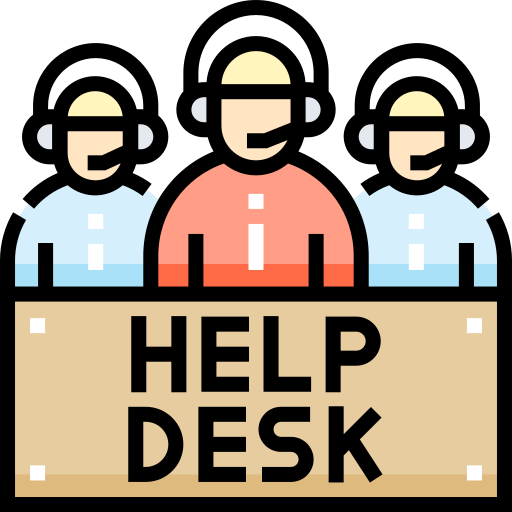
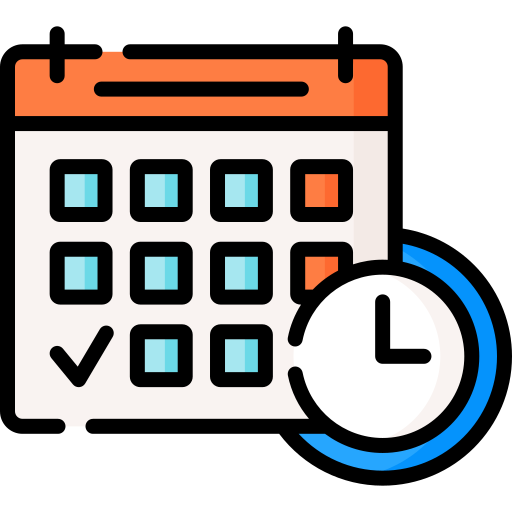
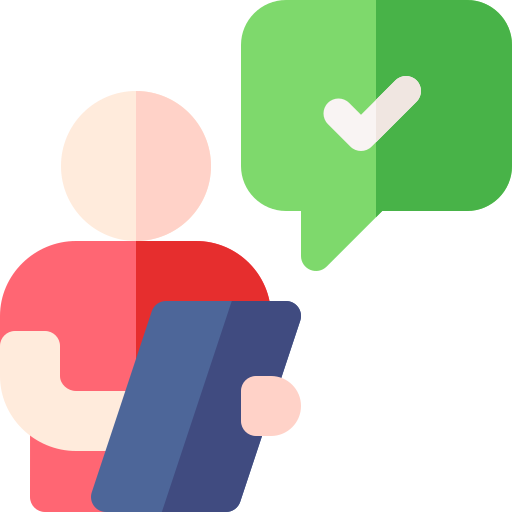
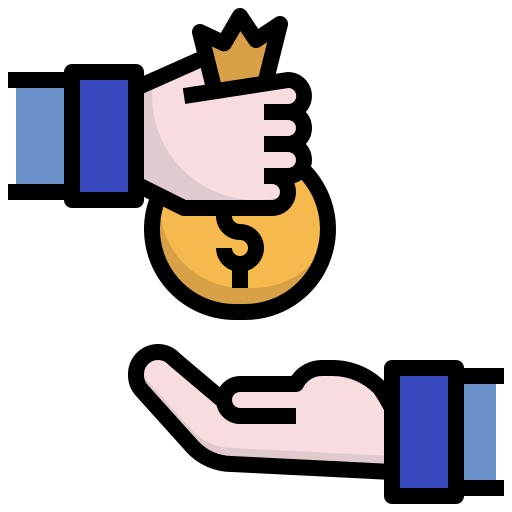
2 thoughts on “Empower Your Call Center with 12 Free Quality Assurance Scorecard Templates!”
This was so helpful. Do you have a template on how to score a live chat interaction?
Thank you
Hi! Thanks for the feedback.
Yes, those templates are available also for chat interactions. They are compatible with CYF Quality, our free QA platform.